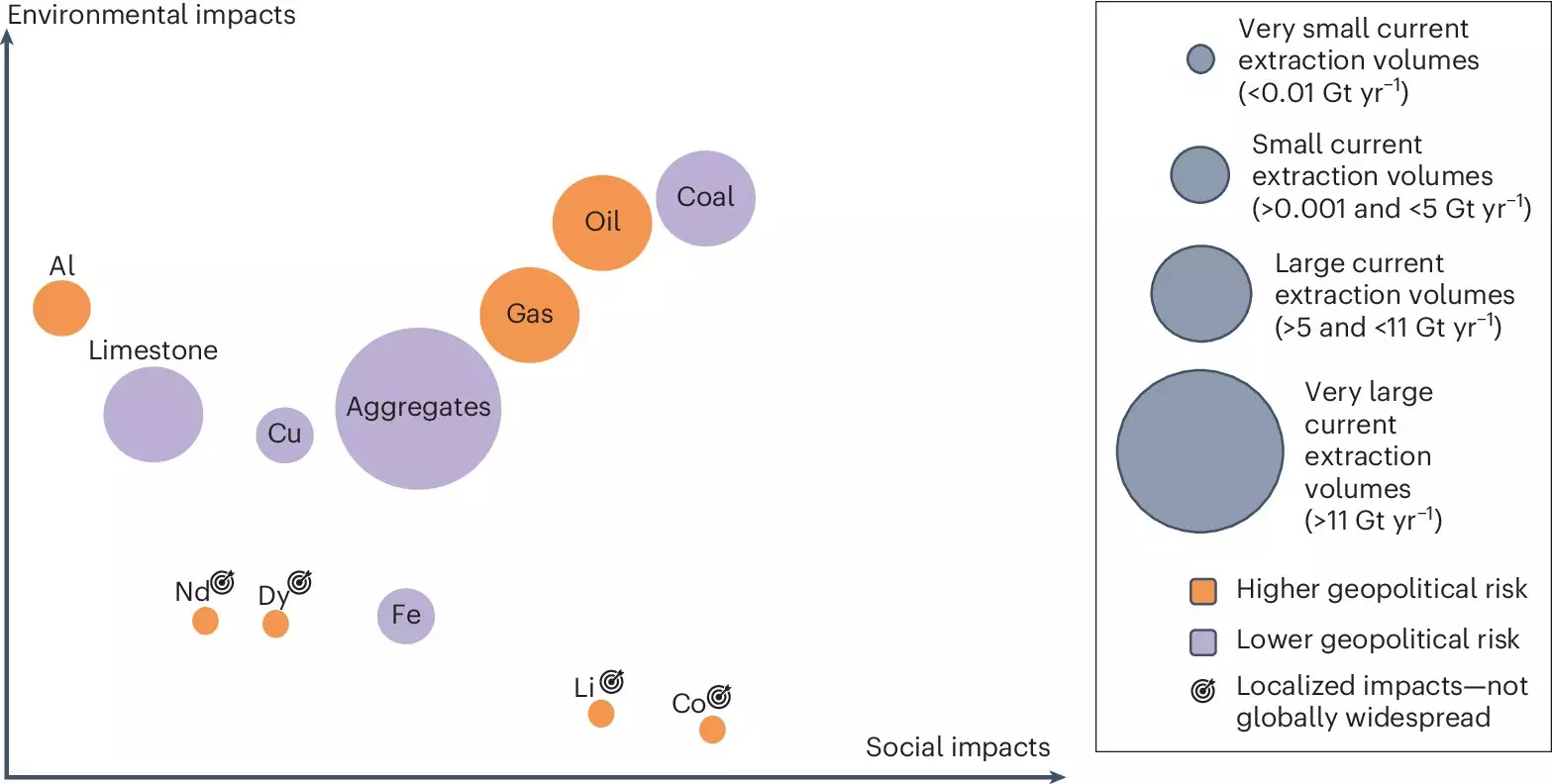The increasing shift towards a sustainable future, particularly in the transportation and energy sectors, is expected to lead to a significant rise in demand for key raw materials such as cobalt, lithium, copper, aluminum, iron, and rare earth elements. According to a recent study conducted by the Berlin-based climate research institute MCC, global demand for cobalt and lithium for e-car batteries is projected to increase nearly 20-fold by 2050. This surge in demand is directly linked to the development of a fossil-free power supply, which will also require a doubling of copper, aluminum, and iron consumption. Additionally, rare earth elements, crucial for technologies like wind turbines, will be needed in greater quantities as well.
Identifying Risks and Challenges
The MCC study highlights the potential environmental and social risks associated with the increased extraction and utilization of raw materials. Factors such as land consumption, threats to biodiversity, water requirements, health hazards from toxic substances, poor working conditions, corruption, political instability, and geopolitical dependencies are all key considerations. For example, countries like Guinea, Congo, and China play significant roles in the global production of aluminum, cobalt, and semiconductor wafers, respectively. The study underscores the need for a comprehensive risk assessment and management strategy to address these challenges.
One of the key findings of the study is the importance of implementing demand-side climate solutions to mitigate the material consumption associated with the climate transition. These solutions include promoting behavioral changes in mobility, housing, and nutrition, as well as enhancing material circularity in the economy. By encouraging more sustainable practices such as pooled mobility in transportation, the use of natural construction materials in building, and reduced meat consumption in food production, it is possible to minimize the environmental impact of the transition.
The study emphasizes the need for investments in infrastructure that support climate-friendly behaviors and provide positive incentives for individuals to adopt sustainable practices. Rather than imposing restrictions, the focus is on creating enabling environments that facilitate the transition to a low-carbon economy. By quantifying and categorizing the potential savings in materials through interdisciplinary research, policymakers can make informed decisions on how to effectively manage resource consumption in the context of climate change.
The study calls for a reevaluation of Integrated Assessment Models (IAMs) that guide climate policy and decision-making processes. These models should be updated to incorporate the material dimension of a low-carbon and carbon-free global economy. By integrating the material implications of decarbonization into future climate scenarios, governments and organizations can better understand the trade-offs and synergies between climate action and resource management. Ultimately, a holistic approach that considers both environmental and social factors is essential for achieving a sustainable and resilient future.



Leave a Reply